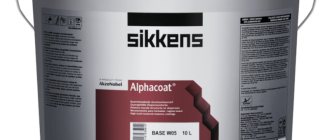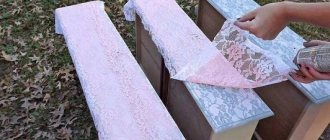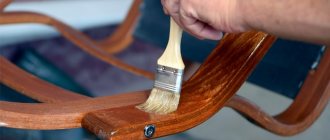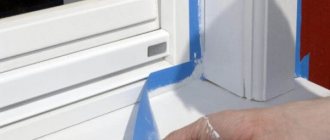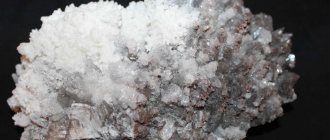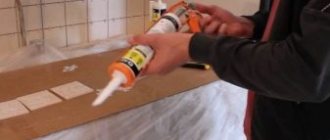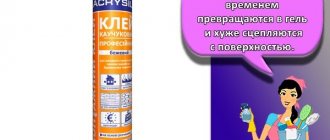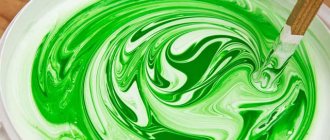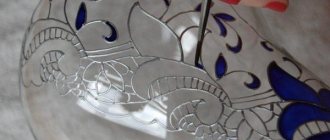Colorful abundance
Today, art stores, office departments and a whole legion of online sites are ready to provide us with a huge amount of paint. And a variety of types, characteristics and qualities.
Naturally, a beginner may be confused by this variety of paints for painting. Not only are there so many types of them, but each company also has its own categories and names of paints and colors! How can you remember everything, figure it out, choose exactly what you need?
Tokyo Pigment store with 4200 types of pigments
Professional artists can immediately name what they need, and choosing the necessary material for drawing can only take them 15-20 minutes. Things are completely different for a beginning artist, or even a child who wants to draw, but does not know what is needed for this.
The variety of paints available today will help you choose exactly what you need. And if you have not yet decided on the main material of your creativity, it is better to try different types of paints to understand what you are most drawn to, and only then purchase them thoroughly and professionally.
By the way, it is not at all necessary to immediately buy some expensive paints; you can try a cheaper option or a student set with small tubes to save money on other paints. You can also go to several painting master classes. They usually already give out all the materials and you don’t need to buy anything yourself. Well, if you are still determined, then read my article and go to the store to buy paints!
Types of paints in painting
What kind of paints are there in general?
Modern paints can be classified according to different criteria: by composition, by type of use, by who paints with them - professionals or amateurs, and, ultimately, by where and how they can be used. Let's look at each of these signs.
Amateur paints
These are the very colors with which it all begins. The first set in a plastic box that you bought for your child’s school for art lessons is exactly those same non-professional paints.
As a rule, such paints can be found in any stationery store, or even a supermarket, for example, Auchan or Lenta. Their advantage is price. Typically, such paints cost from 100 to 300 rubles per set, and the color palette can reach up to 40-50 shades, also including gold, silver and pearlescent colors, as well as paints with the addition of all kinds of glitters.
Basically, amateur paints are watercolors and gouache, less often acrylic, and very rarely, unless it is some cheap analogue from Aliexpress, oil.
Choose paints based on your painting goals
There is no shame in trying to paint with such paints, but if you want more, you will need to buy a professional version. Fortunately, now almost every company has both an amateur and professional line of paints.
Student and professional art paints
Such paints are much more expensive than amateur paints due to their composition, properties and color palette.
What types of professional art paints are there? First of all, oil and watercolor come to mind. But this list also includes gouache (yes, it is not only for children) and the oldest art paint - tempera. And also acrylic, which is gaining popularity. This paint is also sold in both amateur and professional kits.
Mostly such paints are purchased by students of creative universities and professional artists. Agree, rarely does anyone want to buy a set of paints for 3,000 rubles just to try it out. But, if you still want to write or draw something beautiful, and so that it is preserved for a long time, do not spare money.
So, it may happen that you paint a beautiful landscape, for example, with acrylic paint, but with a cheaper and amateur analogue. And after six months or a year you will find that the paint has cracked or faded. If you are doing work to order or as a gift, it is even better not to take risks.
Paints for drawing on paper
Since paper is a fairly thin material, it requires a special approach. Ideal paints for drawing on paper include watercolor, gouache and acrylic. Less often, oil, and then only on special paper for oil paints.
Watercolor is the ideal paint for paper
Paints for painting on canvas
But here, on the contrary, the best paints for canvas are oil, acrylic and tempera. They have a thick, fairly dense consistency, which allows such paints to fit perfectly on the canvas.
Artistic paints for other surfaces
Canvas and paper are far from the only surfaces on which you can draw. And each needs its own colors:
- Wood takes acrylic, oil and tempera well;
- Glass objects are best painted with acrylic or stained glass paints;
- Ceramics – also acrylic
- Concrete - with acrylic paint in cans, or in large tubes and jars;
- The fabric is usually painted with acrylic paints;
- And you can even write on water with special paints - this technique is called ebru.
Let's now take a closer look at each paint for painting.
Briefly about paints for painting. Pigments.
Dear friends!
I have long wanted to make a selection of the most common paints that are used for painting.
What are the properties of each of the paints, what is included in the composition of the paints. Here is a small selection or short article for information. The article is very short, but informative. Later I will talk about each paint in a separate article.
Pigments
- coloring matter - can be of mineral or organic origin or prepared chemically from natural materials, mainly clays containing metal oxides or salts. In addition to these pigments, in the practice of painting, dyes of plant origin are used, obtained from the leaves, bark and roots of plants (indigo saffron and others), as well as pigments obtained by firing grape, peach seeds and firing animal bones. According to Pliny (1st century AD), the most ancient paints were: melinum (white pigment), yellow paint (apparently ocher), red (Sinope soil) and black, obtained artificially. When studying the paint layer of Fayum portraits dating back to the 1st-3rd centuries AD. e., it was found that their painting layer consisted of four colors: white (lead white), yellow (ochre), red (earth paint) and black (charcoal). But in some portraits an organic dye was found, and in others two types of cinnabar, as well as green earth, umber, organic black mixed with indngo and copper blue.
According to ancient and medieval authors, the most ancient paint was lead white, which was obtained artificially by oxidizing lead shavings with vinegar. The range of colors available to ancient and medieval painters was limited. There was a special need for green pigments. A common paint in those days was verdigris, the color of which could range from green and green-blue to blue-green and blue. This paint, used in the preparation of tempera paints, was widely used by painters of the 15th-17th centuries. The study of the paint layer of paintings from the 15th to 19th centuries made it possible to establish that during this period a total of up to three hundred types of different pigments were used, which indicates that artists were searching for the most suitable paints for painting. But at different times, the number of paints actually used was limited. For example, from 1430 to 1600, painters used only eleven pigments for their palette, and in the heyday of painting, in the 17th century, only thirteen. Southern Dutch painters of the 15th century and their followers in the 16th century worked with three blues, two yellows, two reds and two greens, white and black. Painters of the 17th century used four blues, three greens, two reds and yellows, white and black, and only in the 18th century and especially in the 19th century did the palette of artists become significantly enriched and improved.
To work in various painting techniques, suitable types of paints are used. All paints contain color pigments and additives. For example, to hold pigment particles together and ensure their reliable contact with the working surface, a binder is added to paints.
Depending on the type of technique, the binder can be of different types: gum arabic in watercolor and gouache techniques, egg yolk in tempera, drying oil in oil painting, acrylic emulsion in acrylic technique.
Watercolor
Watercolor paints belong to the group of adhesive paints. The name “watercolor” comes from the Latin word “aqua” - water, since water is a solvent for this type of paint. Watercolor is produced in the form of tubes or cuvettes. Each species has a specific type of use. Watercolors on the market are represented by artistic and children's watercolors.
Gouache
Gouache (translated from French as water-based paint), like watercolor, is an adhesive water-soluble paint. When making gouache paints, the same dyes are used as when making watercolors. This is an opaque paint that lies in a dense layer on paper. In gouache paints, white is used as an additive in different quantities, which gives them a whitish appearance after drying.
Oil paints
Oil paints are made from pigments ground into drying oil. Compared to other painting materials, oil paints can be used for much longer - as long as they retain moisture. In oil technique, wet paint applied does not change its color after drying.
Tempera paints
In terms of its properties and composition, tempera occupies an intermediate position between glue and oil paints. Tempera paints can be diluted with water and painted on paper, cardboard, and also, like oil, on canvas primed with emulsion primer.
Acrylic paints
Acrylic art paints can be used in traditional techniques of easel oil or tempera painting. But unlike tempera, acrylic paints change color less when drying and you can work on more flexible substrates without the risk of cracking the film.
Children's paints
High-quality children's watercolor paints are safe for children, since they are based on a solution of harmless corn glue, dextrin, and natural honey-containing additives (molasses, sugar).
Pastel—
Pastels are made in the form of short colored sticks - rimless pencils made from dry paint powder mixed with bonding or whitening agents. Pastel pencils come in hard, medium-soft and soft.
Pastels are written and drawn on the rough surface of paper, cardboard, primed canvas, suede, parchment, etc., starting with hard pencils and ending with soft ones; The colorful powder is rubbed with your fingers or a blender. Pastels are characterized by a velvety matte surface
paint layer, sonorous and pure color, softness of colors that retain their original freshness. However, pastel must be protected from touches and shocks: its colors easily crumble, and their fixation is possible only due to the partial loss of the main advantages of the pastel. The pastel technique was especially popular in the 18th century. (Maurice Quentin de Latour, ) again attracted the attention of artists in the 2nd half. XIX century (Edgar Degas, I. I. Levitan)
Most oil pastels are made from mixtures of pigment, hydrocarbon waxes and animal fat. In a certain sense, its composition is more reminiscent of wax crayons than soft pastel.
Being predominantly a wax-based material, oil pastels are not susceptible to changes during the drying process, which is different from oil paints. The external characteristics of the material remain unchanged unless it is treated with white spirit (which dissolves the pastel composition) and heated to high temperatures (which leads to melting). The nature of oil pastels allows you to create effects that are unique in other drawing techniques. However, experts do not recommend using oil pastels if you want lightfast and long-lasting properties. Its more typical use is for works intended for subsequent reproduction or as preliminary material for computer graphics.
There are many works on NM written in different techniques, some of which I presented in the article.
———
There are many publication sources!!
Internet to the rescue!
Based on materials from the Internet and YAM!
